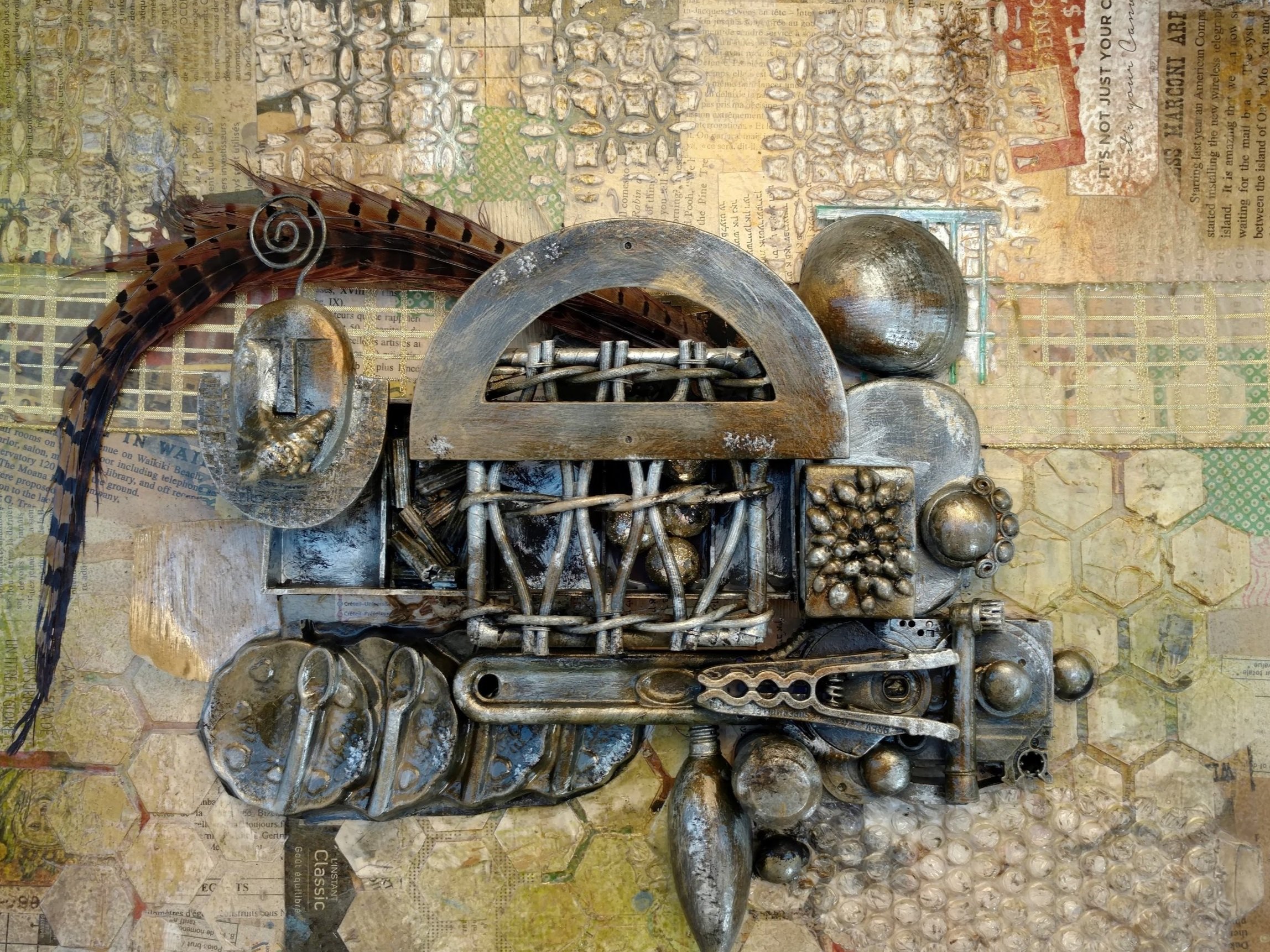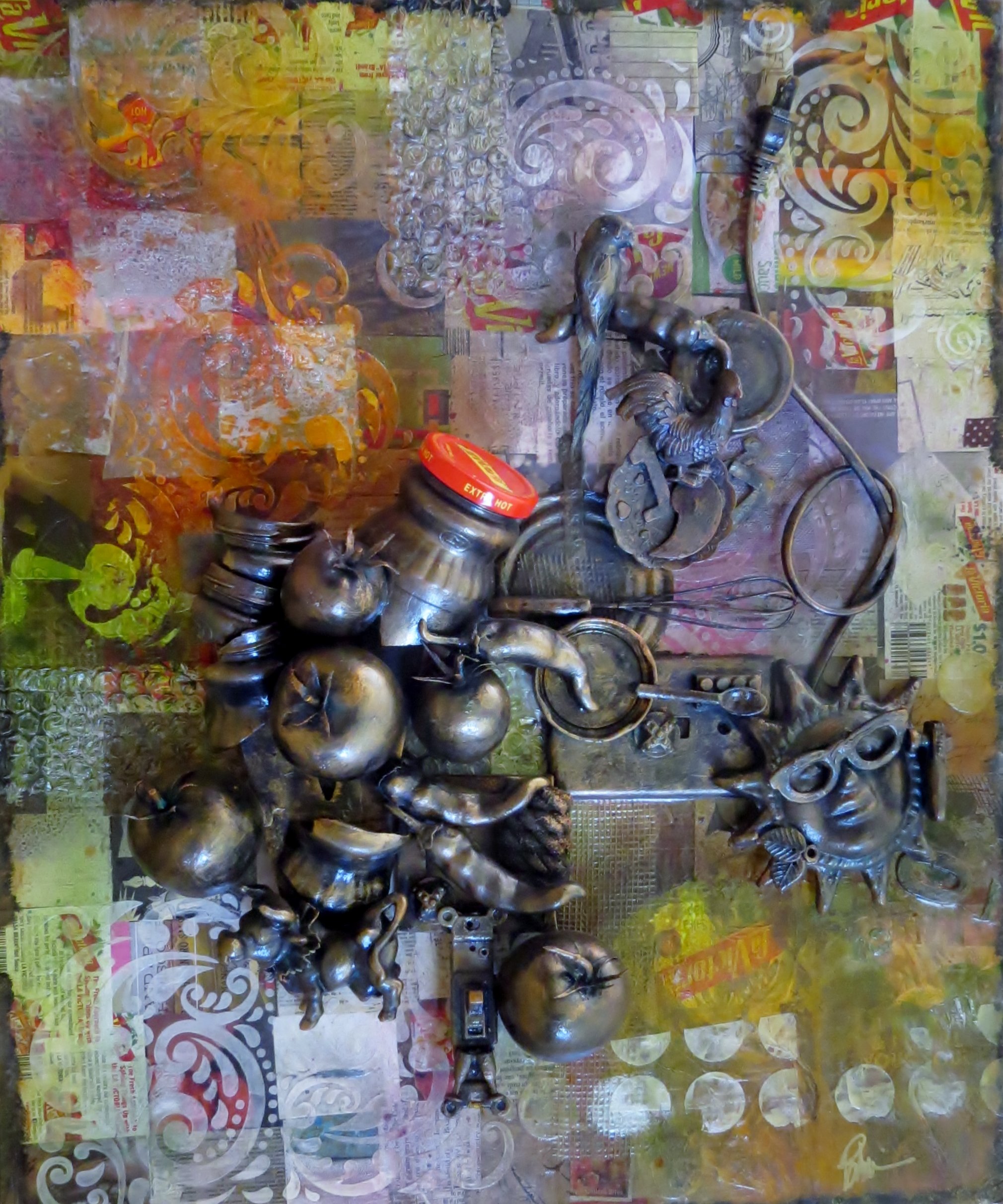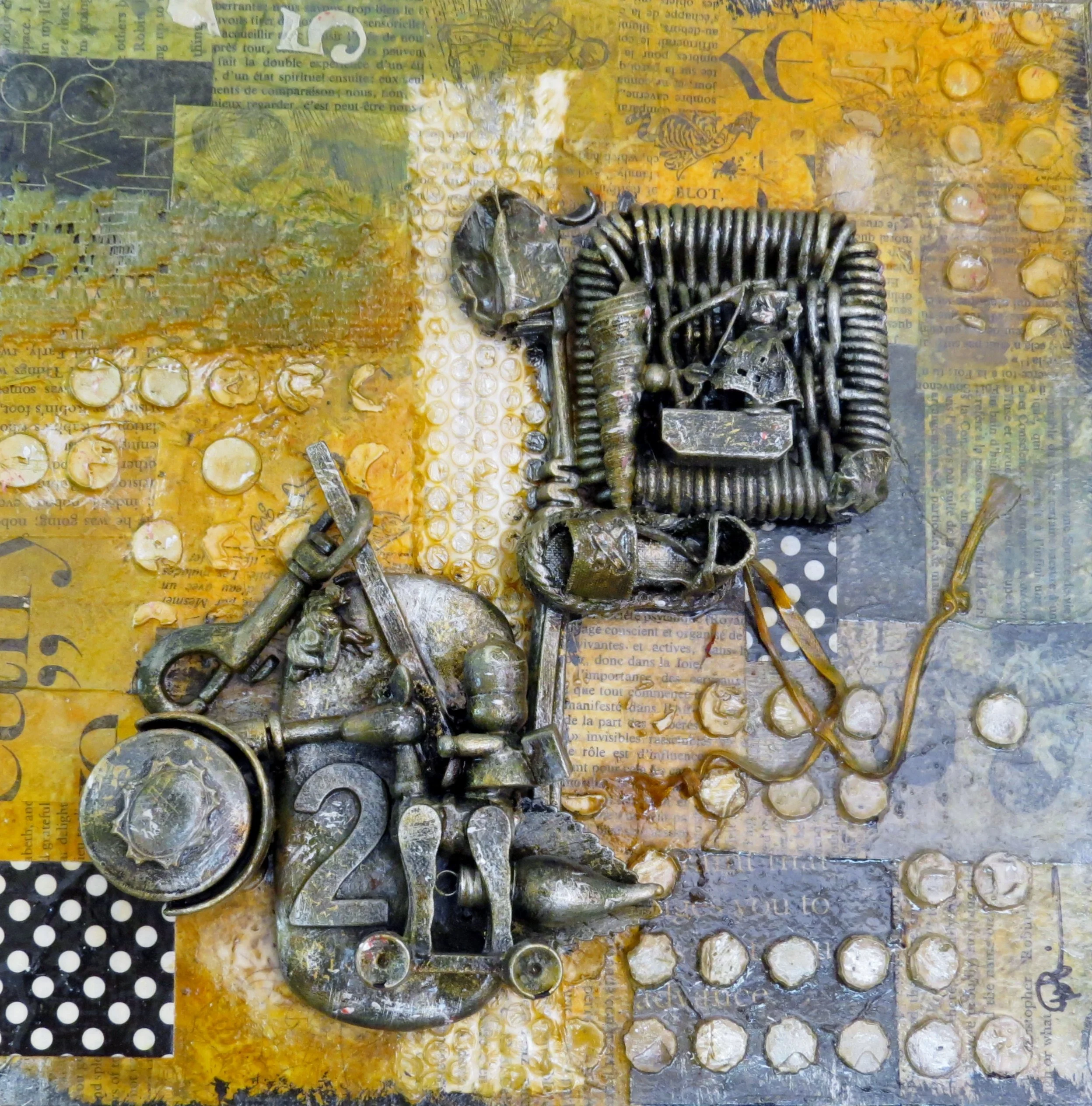Assemblages
“Typically created on a defined substrate that consists of three-dimensional elements projecting out of or from the substrate. Color, recycling and a vivid imagination have always been a part of my soul.” The two-dimensional, collage backgrounds are composed of old book pages, international waybills, love letters and more. Essentially anything that can be flattened, rearranged and used to tell a story.







Historically, assemblage artwork gained prominence in the early 20th century with artists like Pablo Picasso and Marcel Duchamp incorporating found objects into their work. However, it was during the 1950s and 1960s that assemblage truly flourished as a movement, with artists like Louise Nevelson, Joseph Cornell, and Robert Rauschenberg pioneering new possibilities within the medium. Assemblage artwork serves as a reminder that art can be found in the ordinary and that discarded objects can be transformed into something extraordinary. It prompts us to reconsider our relationship with consumerism, waste, and the environment while inspiring creativity and new perspectives.